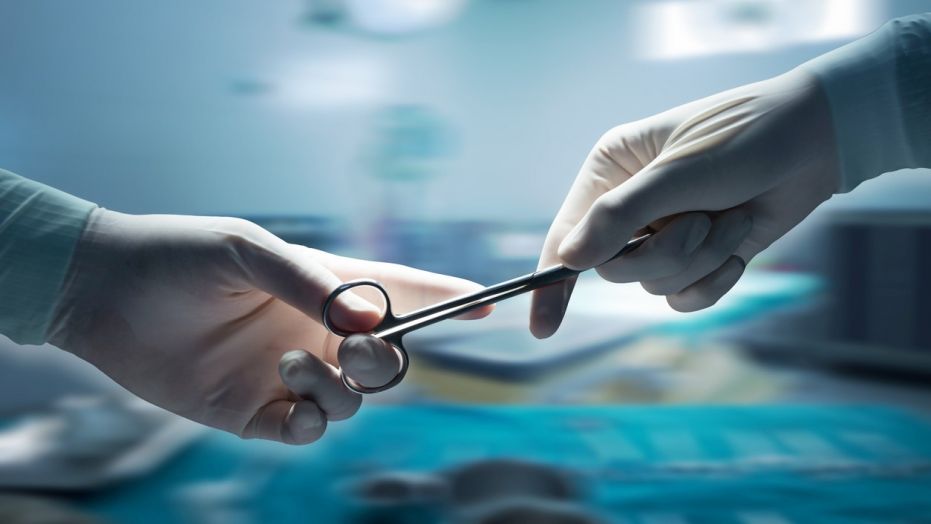[ad_1]

About 25 percent of recipients of donated kidneys die with a functioning kidney that could be reused.
(iStock)
Vertis Boyce remembers that the day she got the call about a potential life-changing surgery was a Tuesday, because she didn’t have dialysis that day.
Around 10 a.m., the kidney transplant coordinator called with the possibility that there was a kidney that the then 69-year-old Boyce would be eligible to receive.
But this donated organ had a backstory that a doctor would need to explain.
“The backstory was that this was the second time it had been transplanted. So I would be the second receiver of that kidney,” Boyce told Healthline.
She had been on the kidney donation waitlist for 8 1/2 years. When the doctor asked her if she wanted the reused kidney, she said yes.
“I didn’t hesitate, because I’d thought I was going to get a kidney,” Boyce recalled.
A new option for transplant surgeons
Boyce received that kidney in July of last year. It was the second of three times Dr. Jeffrey Veale, director of the UCLA Kidney Transplantation Exchange Program at UCLA Medical Center, retransplanted a previously donated kidney last year.
Such retransplantations are very rare — only possible in unique circumstances in which a recipient of a kidney dies without damaging the kidney, hasn’t had the kidney long enough to wear it out, is a match for someone on the list, and hasn’t developed excessive scar tissue from the previous operation.
But Veale says about 25 percent of recipients of donated kidneys die with a functioning kidney that could be reused. Typically, those kidneys go to waste. If more were salvaged, he thinks, it could save hundreds of lives a year among the more than 80 percent of people on waitlists that never receive a kidney.
“Let’s not just automatically rule it out,” Veale said.
A 17-year-old girl originally donated Boyce’s new kidney. It had initially gone to a 25-year-old man, who had it for two years before he died in a motorcycle crash, says Veale.
“I didn’t want that kidney to go to waste. There were a lot of life years left on it,” he told Healthline. So it went to Boyce. “For three people to share one kidney — a white teen, a Hispanic man, a black older woman, and blood types all matched — there’s something beautiful about that.”
On that initial phone call, Veale explained to Boyce there’d be increased risks, because he had only done a retransplantation once before and there’s increased scar tissue on the kidney. Studies have also found increased risk of certain types of rejection in the days following retransplant.
“There was a lot of scar tissue, but I took the arteries and veins that extend out of it beyond the scar tissue so it was actually a fairly straightforward surgery to sew it into Ms. Boyce,” he said. “So she has the kidney from original donor and blood vessels from the second.”
Boyce, from California and now living in Las Vegas, said she hasn’t had any issues with the new kidney — just a “normal recovery.”
Without the need to attend regular dialysis sessions, traveling is now far easier. She attended a nephew’s wedding in March in North Carolina.
“It’s been nine months now. I have more energy. It’s just a good thing, a second chance at life,” she said.
Veale says getting people like Boyce a kidney can be lifesaving. He points out most people over 65 on dialysis die within five years. Numerous studies have found transplants increase that life expectancy.
There is some controversy over whether available kidneys should go to younger patients, who are more likely to use it for longer, and changes to the allocation system have tried to match donors with recipients close to their age. But retransplanting kidneys may reduce fears of kidney life years being “wasted” if older recipients die soon after a transplant.
Changing the mindset about organ donation
It also opens up new ways of donating. One of Veale’s other cases last year involved a man who received a kidney from a donor who had died in a car accident. But the recipient had focal segmental glomerulosclerosis (FSGS), a disease that causes scarring in the kidney and which began attacking the new organ.
So the recipient asked to give the kidney away again, to someone who would be able to actually use it. Veale says it’s the first time a living donor has donated a deceased person’s kidney.
“People who have FSGS, up until this point they’d say, ‘The recipient has FSGS — now we have to discard the kidney,’” Veale said.
He estimates that there have been less than 50 retransplants out of millions of kidneys transplants over the last 60 years.
But Veale says it’s possible that many more could be done, and pointed out that he did three in a year “without even trying.”
“Imagine if we had all 220 transplants programs in the U.S. looking to do this. It’d be great,” Veale said.
The particular combination of factors that allowed these retransplants to be successful and the difficulty of the operation may keep such procedures rare, though.
Veale notes that the fact the kidneys originally came from young donors was a big factor in allowing them to still be viable after years of use and multiple recipients. “You’re starting with something that’s very high quality,” he said. “You got to look at what the original organ quality was.”
Dr. Matthew Cooper, director of kidney and pancreas transplantation at MedStar Georgetown University Hospital in Washington and a board member at the National Kidney Foundation, said it’s a rare circumstance to have a person who received a kidney transplant meet all the requirements to then become a donor, starting with the fact that not everyone who dies can donate a kidney.
And then there’s the fact that a reused kidney would have already been exposed to immunosuppression drugs, which could have damaged it. And there’s the scar tissue.
“It’s a difficult operation to do because the organ essentially scars in the [initial] recipient,” Cooper said. “My hat’s off and kudos to Dr. Veale — even being able to do it technically is worthy of praise.”
“There’s a limited number of organs this could apply to,” he said. “But I do believe that if it is at all possible that those requirements are met, then everything should be done to try to encourage that. While it wouldn’t be a lot of them, it’s worth doing.”
There may also be limitations based on how long a donated kidney was in its initial recipient, according to Dr. Lorenzo Gallon, medical director of the Kidney Transplant Program at Northwestern University’s Feinberg School of Medicine. “If you have somebody who has had a kidney transplant for a long period of time, you can’t use that organ,” he said. “A kidney that has been in someone for 10 years, you can’t use it.”
He argued the death of the recipient “really has to be a few months after the transplant,” though Veale has retransplanted kidneys that recipients had received years before.
For his part, Veale thinks it’s time to start looking into retransplanting other organs as well. “Livers could be a good next step,” he said.
He’d already talked to a liver surgeon about the idea. The surgeon said he’d consider it.
This article originally appeared on HealthLine.com
[ad_2]
Source link

